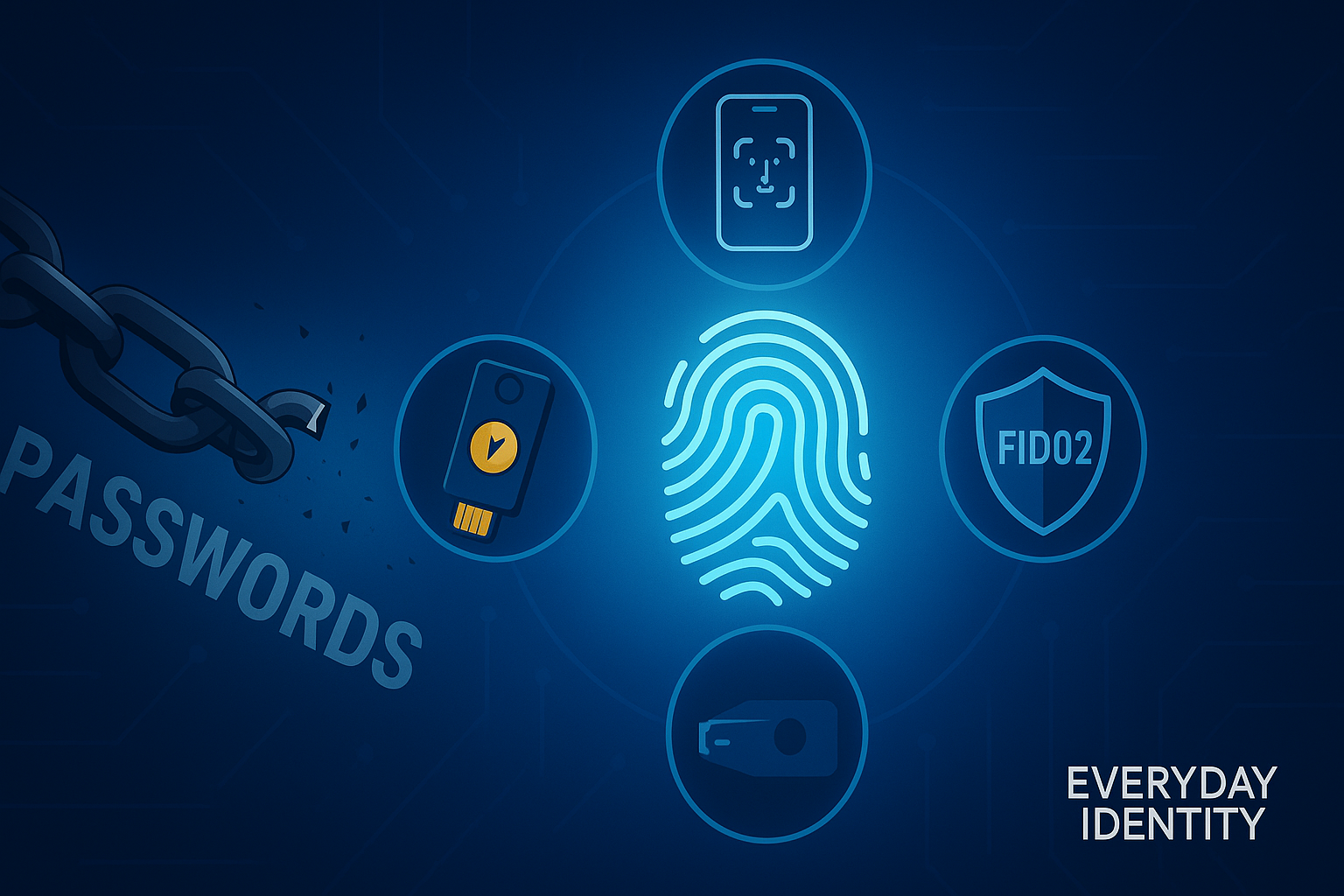
Introduction: The End of the Password Era
Imagine this: an employee’s corporate laptop is stolen from a café. Instead of panicking about whether the thief will guess the password, IT breathes easy—because the device uses passwordless authentication tied to the user’s biometric and hardware token. The attacker has nothing to exploit.
This isn’t a futuristic scenario. Enterprises are already shifting toward passwordless authentication, not just for convenience but to protect against the relentless tide of credential theft. For CTOs and security leaders, the path forward is clear: it’s time to move beyond passwords.
The Case Against Passwords
Passwords have been the Achilles’ heel of digital security since their invention. Users forget them, reuse them, or choose weak ones—and attackers thrive on that.
- 81% of data breaches involve stolen or compromised credentials (Verizon DBIR 2023).
- Credential stuffing attacks, leveraging reused passwords, account for billions of login attempts daily.
- Password reset requests consume 20–50% of IT helpdesk calls, costing enterprises millions annually.
Simply put, passwords are a weak link in enterprise security—and eliminating them removes one of the attacker’s most lucrative targets.
Understanding Passwordless Authentication
Passwordless authentication replaces static, knowledge-based secrets with possession and inherence factors. Common approaches include:
- Biometrics: Fingerprint, face, or iris recognition. Convenient, user-friendly, and widely adopted on personal devices.
- Hardware tokens: Devices like YubiKeys or smart cards that use public-key cryptography.
- FIDO2/WebAuthn standards: Open standards enabling secure, phishing-resistant login across browsers and platforms.
Benefits for enterprises include:
- Stronger resistance to phishing and credential theft
- Reduced helpdesk load from password resets
- Better user experience (no more “forgot password” loops)
- Compliance with modern identity frameworks like Zero Trust
Implementing Passwordless in Your Organization
A step-by-step CTO playbook:
Assess Your Infrastructure
- Audit your identity provider (IdP) capabilities (Okta, Entra ID, Ping, ForgeRock).
- Inventory where passwords are still primary authentication (VPN, SaaS, legacy apps).
Define User Groups & Risk Profiles
- High-risk users (admins, executives) should be prioritized for passwordless.
- Frontline workers may need mobile-friendly solutions (biometrics, QR login).
Select Your Passwordless Solution
- Enterprise-ready: FIDO2 keys, platform biometrics, smart cards.
- Hybrid deployments may mix hardware and mobile authenticators.
Pilot and Integrate
- Start with a limited business unit.
- Integrate with existing SSO/MFA workflows.
Deploy Enterprise-Wide
- Roll out progressively, ensuring compatibility with remote and offline access.
- Retire password reset flows gradually.
Overcoming Challenges & User Adoption
Passwordless doesn’t come without friction. Expect pushback like:
- “What if I lose my device?”
- “I don’t trust biometrics.”
- “It’s too complicated.”
Solutions:
- Provide backup authenticators (secondary hardware token, recovery codes).
- Train employees with short, simple adoption guides.
- Communicate the benefits—faster logins, fewer disruptions, higher security.
Pro Tip: Frame passwordless as an employee perk. Instead of waiting 10 minutes on hold for a password reset, log in instantly with a fingerprint.
Download: Adoption Guide – Fingerprint Password (PDF)
Download: Adoption Guide – Passkeys (PDF)
Download: Adoption Guide – Tap to Type (PDF)
Future Trends in Passwordless Security
The passwordless journey is just beginning. Looking ahead:
- Passkeys: Apple, Google, and Microsoft are pushing syncable FIDO2 credentials stored securely across devices.
- Behavioral biometrics: Continuous authentication based on typing cadence, mouse movement, or gait.
- Decentralized identity: Wallet-based authentication using W3C DID standards.
- Industry adoption: Gartner predicts that by 2025, 50% of enterprises will adopt passwordless for most use cases.
Enterprises that delay risk being outpaced in both security resilience and employee satisfaction.
Conclusion: A Strategic Shift for CTOs
The verdict is clear: passwords no longer protect the enterprise—they expose it. Moving to passwordless authentication is not just an IT project, but a strategic security and business initiative.
By adopting passwordless, CTOs can:
- Strengthen their Zero Trust strategy
- Reduce operational costs
- Deliver a seamless user experience
Now is the time to start your pilot. Don’t wait for the next breach headline—ditch the password and lead your enterprise into a secure, passwordless future.